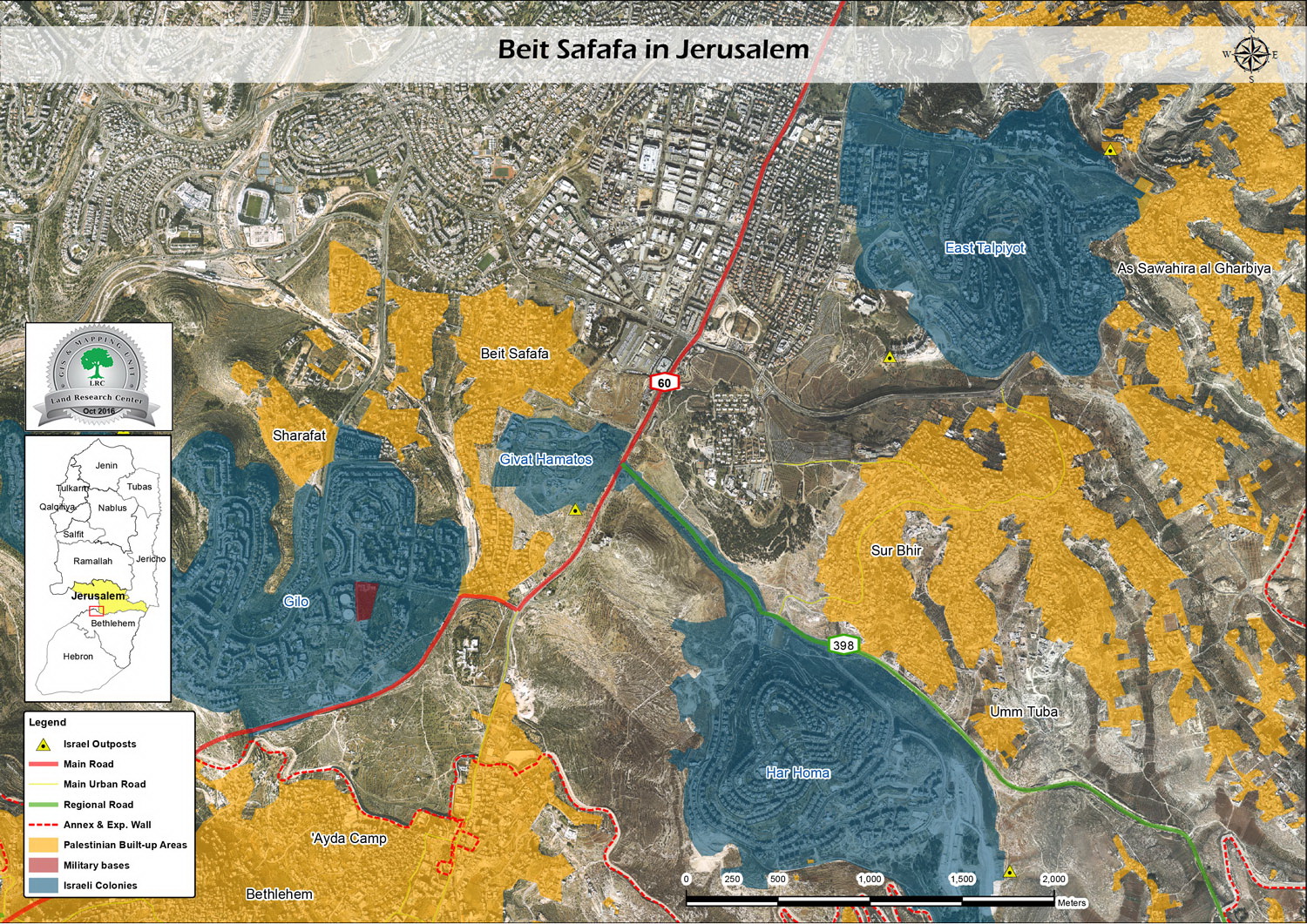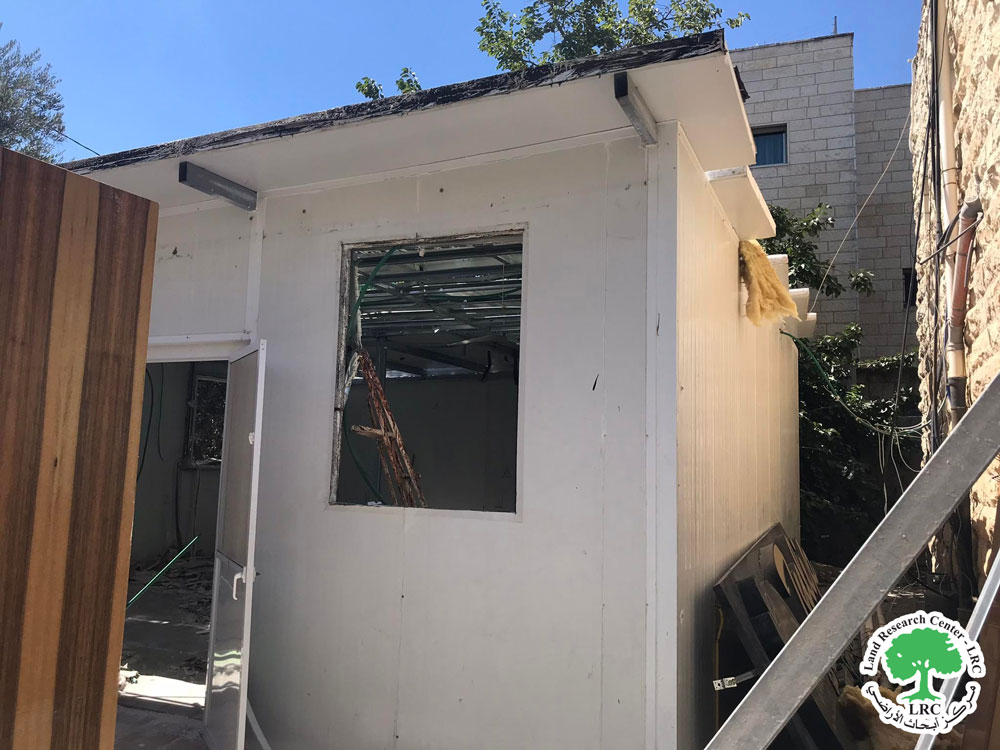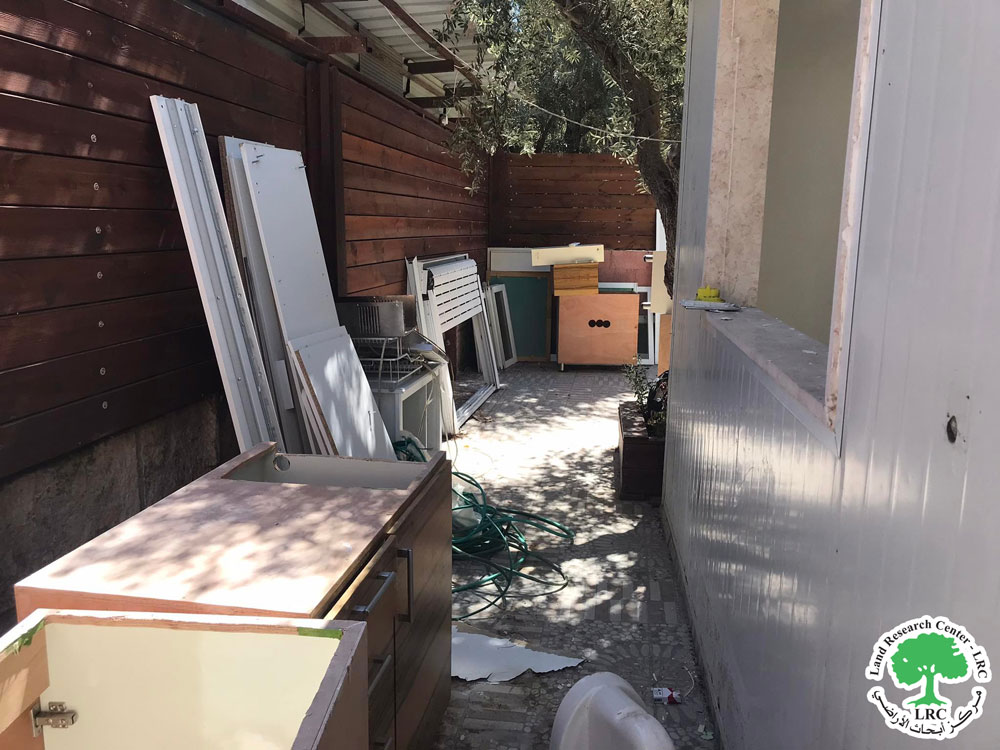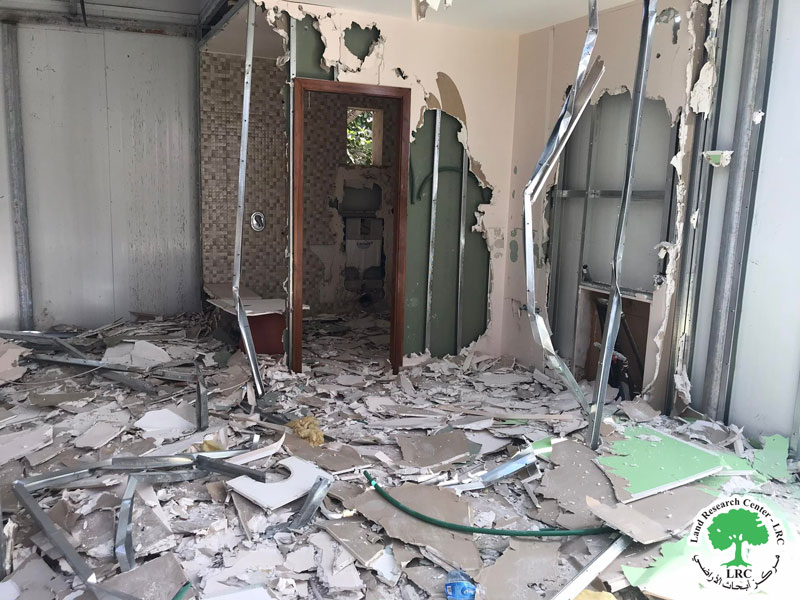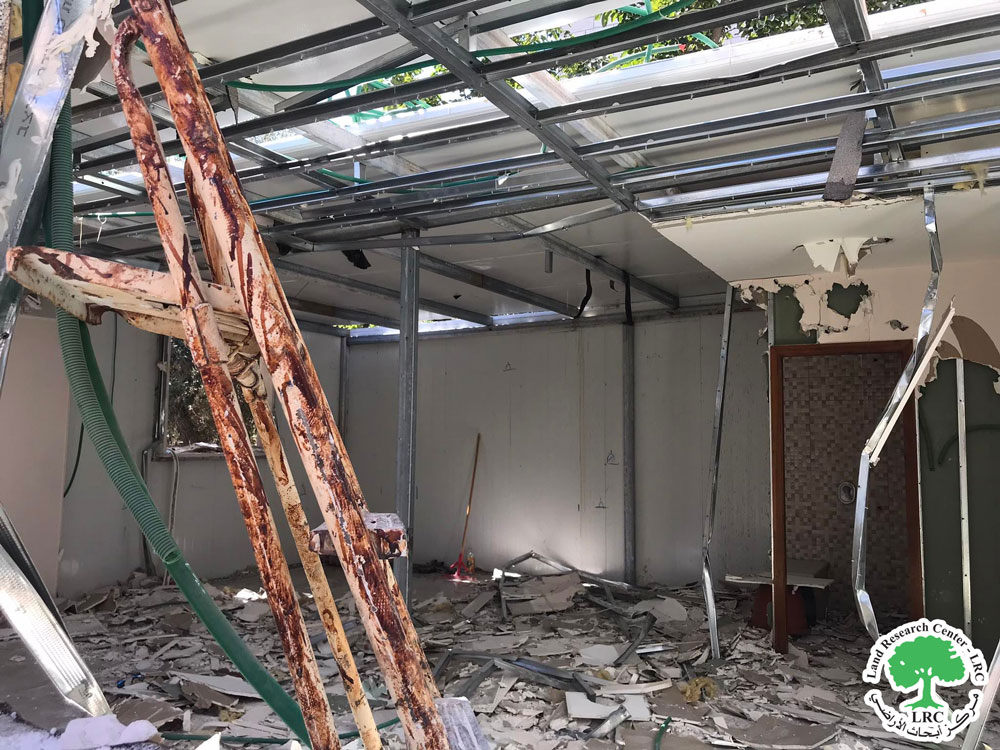2022-08-21
The policy of demolition does not stop: the demolition of a house in Beit Safafa - occupied Jerusalem
Ahmed Alyan, from Beit Safafa - south of Jerusalem, partially demolished his house on the morning of August 21, 2022, by order of the occupation municipality in Jerusalem, under the pretext of not having a building license. The citizen proceeded with the demolition of the house, and according to the orders, the house must be completely demolished. Otherwise, the citizen was threatened with a fine of about 70,000 shekels (about 20 thousand US dollars) in the event that the municipality's crews carried out the demolition.
| |
|
Photos show the building from the outside, the furniture and the internal demolition
The owner expressed that the house is 60 m², and it was built in 2014 and since then the municipality has been tracking him and threatening him with demolishing the house, or not open windows of the house. He added that after he had paid the value of the previous fines, he was notified to pay another fine of 18,000 shekels (5,000 US dollars), and in 2019, after Alyan had finished paying the fines, an order was issued against him to appear before the court, which later decided that there was no license for the house.
It is worth mentioning that the house is located in the old town of Beit Safafa and is built of a cement floor and walls made of “banalite” material, and it is also roofed with the same material. It cost about 200,000 shekels (equivalent to 60 thousand US dollars) to build this house, which consists of a room, a kitchen, and a bathroom. There are three people living in the home, including the child and the wife of Mr. Alyan.
As for the demolition procedures, the citizen first emptied the house of its furniture, then demolished the internal components such as the separation walls, the bathroom and the kitchen, and then proceeded to dismantle and demolish the external walls and clean the place, according to the municipality’s orders, in a period not exceeding 10 days. On the other hand, the family has been displaced and forced to find a house for rent, knowing that the Beit Safafa area is one of the areas with the highest rent prices.
Beit Safafa has an area of 3,341 dunams, but large areas have been confiscated. Gilo settlement annihilated 1529 dunams, and about 166 dunums of Har Homa settlement, and now about 285 dunams for Givat Hamatos settlement, and about 39 dunams of Givat Hashkid settlement, in addition to Begin road that cuts through from the middle, and the new light rail project that wraps around it.
Legal Feedback:
The demolition of Palestinian homes and facilities by the occupation authorities comes within its violations of international and humanitarian law, and a violation of a right of Palestinian citizens guaranteed by international law and international treaties, which is the right to adequate housing, within the following articles:
- Article 147 of the Fourth Geneva Convention, which states that “extensive destruction and appropriation of property, not justified by military necessity and carried out unlawfully and wantonly” is a “grave breach” of the Convention”.
- Article 53 of the Fourth Geneva Convention of 1948 “prohibits any destruction by the Occupying Power of real or personal property belonging individually or collectively to private persons, or to the State, or to other public authorities, or to social or cooperative organizations, is prohibited, except where such destruction is rendered absolutely necessary by military operations”.
- Article 33 of the Fourth Geneva Convention states:
- No protected person may be punished for an offence he or she has not personally committed.
- Collective penalties and likewise all measures of intimidation or of.
- Paragraph 'G' of Article 23 of The Hague Convention of 1907 warns against “the destroy or seize the enemy's property, unless such destruction or seizure be imperatively demanded by the necessities of war”.
- Article 17 of the Universal Declaration of Human Rights, dated December 10, 1948, states that “Everyone has the right to own property alone as well as in association with others”.
Beit Safafa:
It is worth noting that the village of Beit Safafa, located to the southwest of Jerusalem, has been subjected to Judaization and confiscation operations since 1948. In 1948 the village was divided into two parts, one part belonged to the government of Jordan, and the other part was occupied by the Israelis. In the Naksa of 1967, the barrier was removed and the village was completely annexed under the control of the Israelis. In light of this, the occupation built settlements on the entire borders of the village. In the south, southeast and southwest, the settlements of Gilo and Har Homa (Abu Ghneim) are located, and from the north The settlement of Tel Piot is located, to the west lies the settlement of Tsumet Bat, in addition to the establishment of the two settlements of Givat Hamatos to the east and the settlement of Givat Hashkid to the north. And the wide Begin road, which cuts through the village from north to south, and which devoured a large area of land. In addition to this, the project of the light rail, which wraps around the village from all sides, starts from the north in the western side of the village and extends to its south, thus separating it from the village of Sharafat to the west, and then turns from west to east near Deir al-Tantour, separating it permanently from Bethlehem, and then from south to north to the east of the village, which separates it from Umm Tuba and Sur Baher.
All of this is reflected in the general view of the village, which has lost its Palestinian surroundings, leaving only the area of land where the residents of the village live, who suffer from lack of space and the high prices of land and homes, as well as the impossibility of obtaining and starting building permits in light of the huge sums required by such projects, and running out of lands.
